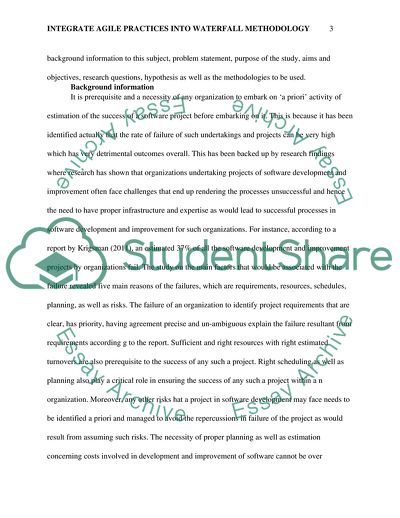Cite this document
(Integrating Agile Practices into Waterfall Methodology Coursework Example | Topics and Well Written Essays - 3000 words, n.d.)
Integrating Agile Practices into Waterfall Methodology Coursework Example | Topics and Well Written Essays - 3000 words. https://studentshare.org/information-technology/1808591-integrate-agile-practices-into-waterfall-methodology
Integrating Agile Practices into Waterfall Methodology Coursework Example | Topics and Well Written Essays - 3000 words. https://studentshare.org/information-technology/1808591-integrate-agile-practices-into-waterfall-methodology
(Integrating Agile Practices into Waterfall Methodology Coursework Example | Topics and Well Written Essays - 3000 Words)
Integrating Agile Practices into Waterfall Methodology Coursework Example | Topics and Well Written Essays - 3000 Words. https://studentshare.org/information-technology/1808591-integrate-agile-practices-into-waterfall-methodology.
Integrating Agile Practices into Waterfall Methodology Coursework Example | Topics and Well Written Essays - 3000 Words. https://studentshare.org/information-technology/1808591-integrate-agile-practices-into-waterfall-methodology.
“Integrating Agile Practices into Waterfall Methodology Coursework Example | Topics and Well Written Essays - 3000 Words”. https://studentshare.org/information-technology/1808591-integrate-agile-practices-into-waterfall-methodology.


